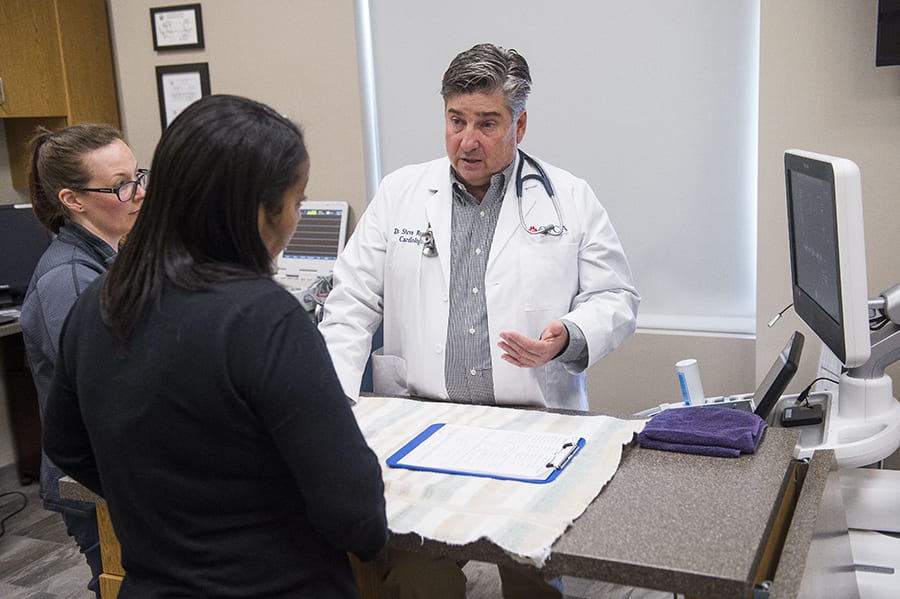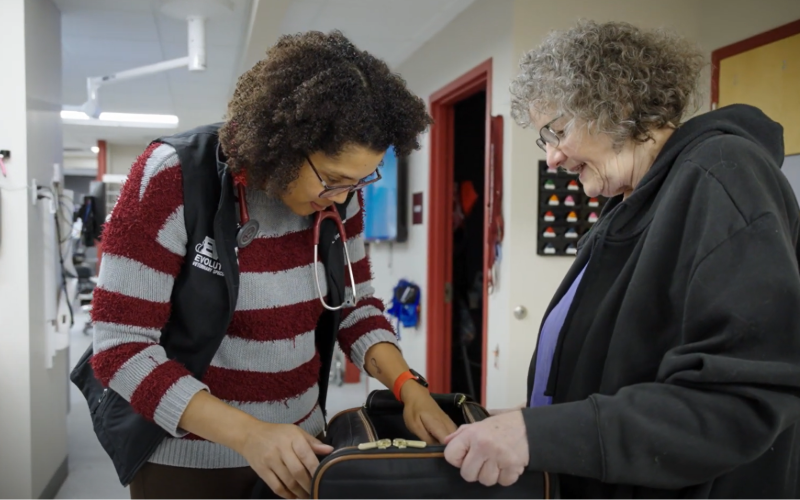The Role of Ultrasound and CT Check in Modern Vet Practices: Insights From Experienced Professionals
In modern-day veterinary methods, ultrasound and CT scans considerably enhance analysis capabilities. These imaging techniques provide essential understandings into animal health and wellness, assisting therapy choices. Experienced experts recognize the one-of-a-kind benefits of each modality. Ultrasound provides real-time evaluations, while CT checks provide complex physiological information. Comprehending their duties and applications increases vital inquiries about their impact on client outcomes and the future of vet diagnostics. What understandings can be acquired from their incorporated usage?
Understanding Ultrasound in Veterinary Medication
Ultrasound is a vital diagnostic tool in veterinary medication, supplying a non-invasive approach to picture internal structures. This imaging method employs high-frequency acoustic waves to develop real-time images of cells and organs, enabling veterinarians to analyze problems without medical treatment. Typical applications consist of evaluating the heart, liver, kidneys, and reproductive body organs, along with keeping an eye on pregnancies.The procedure is relatively quick and can be performed in numerous setups, making it an accessible option for vets. Unlike radiography, ultrasound offers comprehensive details regarding soft cells and blood flow, which is crucial for accurate diagnoses.Veterinary professionals rely on ultrasound to spot problems such as growths, cysts, and fluid buildup. Its capacity to direct biopsies and other treatments additionally enhances its energy in professional method. By providing a effective and risk-free method to take a look at interior anatomy, ultrasound has actually come to be a foundation of modern-day veterinary diagnostics.
The Advantages of CT Checks for Pet Diagnostics
CT scans deal substantial advantages in veterinary diagnostics by giving boosted precision in recognizing interior conditions (Board Certified Veterinary Cardiologist). As a non-invasive imaging method, they guarantee the safety and comfort of animals throughout evaluations. Additionally, CT scans facilitate a complete assessment of inner structures, permitting for more efficient treatment planning
Improved Diagnostic Precision
Improvements in imaging modern technology have considerably improved diagnostic precision in veterinary medication, specifically with using CT scans. These scans give thorough cross-sectional photos of a pet's internal structures, allowing vets to determine irregularities with accuracy. The high resolution and three-dimensional capacities of CT imaging promote the detection of conditions such as lumps, cracks, and interior bleeding that may be missed out on with standard imaging methods. In addition, CT scans can help in pre-surgical planning by providing a complete sight of physiological connections. This level of detail not just enhances the precision of diagnoses however additionally help in customizing reliable treatment strategies. The assimilation of CT innovation right into veterinary techniques is transforming the landscape of pet health care, boosting end results for individuals.
Non-Invasive Imaging Method
The intro of non-invasive imaging techniques has actually revolutionized pet diagnostics, with CT scans emerging as a popular tool in vet methods. These scans supply high-resolution, cross-sectional pictures of an animal's inner frameworks, enabling veterinarians to assess complicated conditions without the need for intrusive procedures. The benefits of CT scans include their ability to discover lumps, cracks, and interior bleeding with remarkable precision. Furthermore, they facilitate the evaluation of soft cells and body organs, improving analysis capacities. The rate of CT scanning enables fast decision-making, which is important in emergency situations. By decreasing anxiety and discomfort for the animal, CT scans add to an extra humane method to diagnostics, eventually improving therapy results and progressing vet care.
Comprehensive Internal Evaluation
A detailed inner analysis is vital for accurate diagnosis and effective therapy in veterinary medication. CT scans deal significant advantages in this regard, giving in-depth cross-sectional images of an animal's internal structures. This advanced imaging technique boosts visualization of intricate anatomical regions, allowing veterinarians to identify problems such as tumors, cracks, and interior blood loss with better precision. Furthermore, CT checks facilitate the assessment of conditions that may be challenging to identify via typical techniques. The speed and accuracy of CT imaging additionally add to prompt interventions, improving person outcomes. As vet practices progressively integrate CT innovation, the benefits of substantial inner analyses end up being noticeable, reinforcing the significance of this device in modern veterinary diagnostics.
Comparing Ultrasound and CT Imaging Techniques
While both ultrasound and CT imaging serve vital duties in vet diagnostics, each strategy supplies unique benefits and constraints that can affect medical decision-making. Ultrasound is specifically valued for its real-time imaging capacities, allowing vets to observe vibrant physical processes. This technique is non-invasive, portable, and does not include ionizing radiation, making it a much safer choice for both animals and clinicians. Ultrasound may have limitations in envisioning certain physiological structures or deep tissues.Conversely, CT imaging provides thorough cross-sectional views of the body, allowing for exact localization of irregularities. It stands out in reviewing facility body organs and structures, specifically in the thorax and abdominal area. CT scans need sedation or anesthesia in numerous cases and entail direct exposure to ionizing radiation. Eventually, the choice in between ultrasound and CT depends upon the certain medical circumstance, the area of interest, and the urgency of the analysis requirements.
Instance Studies: Effective Diagnoses Via Imaging
Study highlight the significant renovations in diagnostic precision accomplished via advanced imaging technologies like ultrasound and CT scans in vet practices. These advancements not just improve the discovery look at more info of various problems but likewise help with reliable and timely treatment strategies. Evaluating specific cases can highlight the transformative effect of these imaging strategies on veterinary medication.
Analysis Precision Improvements

Imaging Modern Technology Advancements
As veterinary imaging technology remains to progress, its effect on diagnostic capabilities becomes increasingly evident. Recent case researches highlight the successful application of advanced ultrasound and CT scan techniques in determining intricate problems. A veterinary center made use of high-resolution CT scans to detect an uncommon kind of lung cancer in a canine, which conventional imaging had actually missed out on. An ultrasound examination disclosed a stomach mass in a pet cat, motivating prompt surgical intervention and a favorable end result. These innovations not just improve analysis accuracy but additionally enable veterinarians to design targeted therapy plans. By leveraging sophisticated imaging technologies, vet experts are considerably enhancing client care, bring about much more efficient management of different health conditions in animals.
The Duty of Imaging in Emergency Vet Care
Imaging plays an important duty in emergency vet treatment, giving vets with crucial information required to make quick, enlightened decisions. In immediate situations, methods like ultrasound and CT scans enable practitioners to swiftly assess a pet dog's internal frameworks, identifying critical problems such as internal blood loss, cracks, or organ irregularities. These imaging modalities permit real-time analyses, promoting prompt interventions that can be life-saving. Ultrasound is important for examining soft tissue injuries and conditions like liquid buildup, while CT checks offer thorough images of complicated anatomical frameworks, vital for diagnosing trauma cases. The speed and accuracy of these imaging strategies boost the veterinarian's ability to develop reliable treatment plans, making sure the ideal feasible end results for their patients. The integration of innovative imaging technologies right into emergency situation vet methods is not only useful however progressively necessary, as it improves analysis capacities and boosts general pet care during critical minutes.

Training and Proficiency in Vet Imaging
Innovative imaging techniques such as ultrasound and CT scans are essential for efficient vet treatment, the successful execution of these technologies heavily depends on the training and knowledge of vet professionals. Efficient use of imaging devices requires extensive expertise of anatomy, pathology, and the concepts underlying each modality. Veterinary experts have to undergo customized training to properly interpret imaging results, which is essential for diagnosing conditions and preparing treatment.Certifications and proceeding education and learning in veterinary imaging improve the abilities of experts, enabling them to remain updated with technical innovations. Partnership between radiologists and vets often results in enhanced diagnostic precision, as experts can provide understandings right into complicated situations. Furthermore, useful experience in managing imaging devices promotes confidence in its application. Inevitably, the top quality of vet imaging solutions is straight associated to the degree of training and proficiency possessed by the professionals utilizing these crucial analysis devices.
Future Patterns in Diagnostic Imaging for Animals
With the fast improvements in innovation, veterinary analysis imaging is poised for significant advancement in the coming years. Arising patterns show a change towards even more mobile and accessible imaging techniques, such as handheld ultrasound devices, which could boost field diagnostics. Additionally, the combination of expert system is anticipated to change photo evaluation, permitting quicker and extra accurate interpretations of results.Moreover, advancements in 3D imaging strategies and calculated tomography will certainly give vets with more thorough sights of pet composition, resulting in better treatment strategies. Online reality innovation might additionally play a function in surgical planning and education, offering veterinarians an unique viewpoint on complex cases.As telemedicine proceeds to expand, remote appointments assisted in by diagnostic imaging will certainly become extra typical, allowing experts to aid family doctors in real-time. On the whole, these trends are set to boost the effectiveness and performance of veterinary care, eventually improving animal results.
Regularly Asked Inquiries
How Much Do Ultrasound and CT Checks Price in Veterinary Facilities?
The costs of ultrasound and CT scans in veterinary centers usually range from here $300 to $1,500, relying go to this site on factors such as location, center type, and particular treatments required for the animal's medical diagnosis and therapy.

Exist Any Type Of Threats Related To Ultrasound and CT Scans for Pets?
Ultrasound and CT scans normally posture marginal threats to pet dogs. Possible worries include sedation responses and exposure to anesthetics. Vets meticulously evaluate each instance to mitigate any kind of dangers related to these analysis procedures
Just How Lengthy Do Ultrasound and CT Procedures Normally Take?
Ultrasound procedures usually take about thirty minutes to an hour, depending upon the intricacy. CT scans, being more thorough, normally require thirty minutes to 90 mins, consisting of preparation and recuperation time for the animal.
Can All Veterinarians Perform Ultrasounds and CT Scans?
Not all vets can execute ultrasounds and CT scans. Specialized training and qualification are frequently called for to guarantee proficiency in these sophisticated imaging techniques, which may restrict their schedule to vets with additional certifications and sources.
What Sorts Of Animals Profit Most From These Imaging Techniques?
Specific pet types, particularly pet dogs and felines, advantage significantly from ultrasound and CT scans. These imaging methods boost analysis accuracy for problems like growths, interior injuries, and organ problems, bring about enhanced treatment results and person treatment. The high resolution and three-dimensional capacities of CT imaging help with the detection of conditions such as growths, cracks, and internal bleeding that may be missed with standard imaging approaches. Case studies illustrate the considerable renovations in analysis precision attained via advanced imaging innovations like ultrasound and CT scans in veterinary practices. Improving diagnostic precision in vet methods has actually been significantly assisted by developments in imaging innovations such as ultrasound and CT scans. Advanced imaging techniques such as ultrasound and CT scans are vital for reliable vet care, the successful implementation of these innovations heavily depends on the training and experience of vet experts. Vet experts should undergo specialized training to accurately translate imaging results, which is important for diagnosing problems and preparing treatment.Certifications and continuing education in vet imaging boost the skills of specialists, enabling them to remain upgraded with technical developments.